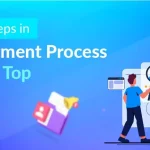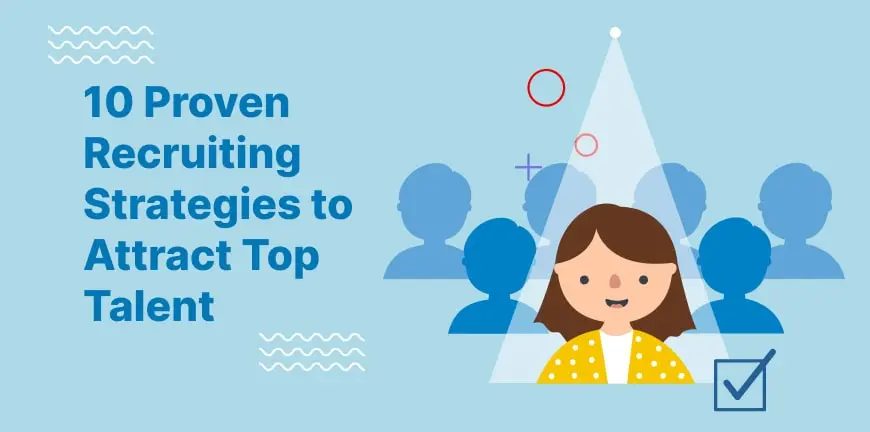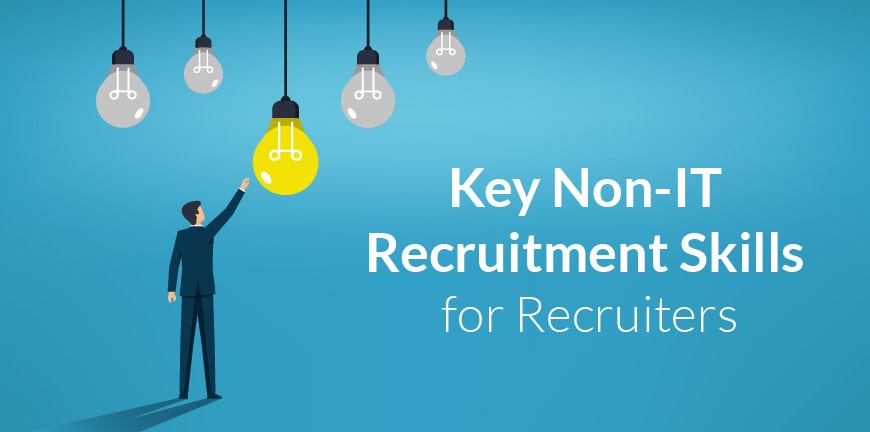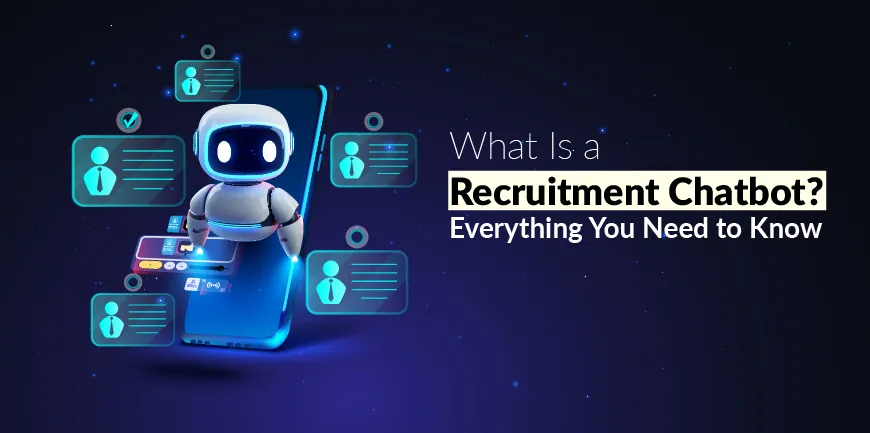
8 Key Steps in Recruitment Process to Hire Top Talent
19/09/2025
What Is Pay Scale? Definition, Importance, and Factors Explained
21/09/2025- What Is a Recruitment Strategy?
- Core Components of a Recruitment Strategy
- Why Strategic Recruitment Matters?
- Approaches to Recruitment Strategy
- Why Recruitment Strategy Matters for Business Success
- Top 10 Proven Recruitment Strategies
- How to Choose the Right Recruitment Strategy for Your Organization
- Tools & Technology That Enhance Recruitment Strategies
- Common Recruitment Mistakes to Avoid
- Measuring the Effectiveness of Recruitment Strategies
- Case Studies & Examples of Successful Recruitment Strategies
- Conclusion
- Key Takeaways
- Frequently Asked Questions
Hiring the right people has never been tougher, but the good news is: there are proven ways to get it right. In today’s competitive talent market, companies can’t just rely on job postings and hope for the best. They need smart, well-rounded strategies that actually deliver results. That’s where this guide comes in.
We’ve pulled together 10 proven recruitment strategies that will help your business improve hiring quality, attract top talent, and cut down on wasted time and costs. Whether you’re scaling fast or filling niche roles, these strategies give you a clear edge. Let’s Go!
What Is a Recruitment Strategy?
A recruitment strategy is a comprehensive plan that outlines how organizations identify, attract, and hire qualified talent. This plan does more than just fill empty positions; it acts as a strategic roadmap to secure the best candidates that line up with your company’s goals.
Core Components of a Recruitment Strategy
A good recruitment strategy defines your ideal candidates and lists the exact steps to attract them. It identifies the target audience, picks the best channels to reach potential candidates, and creates messages that convince qualified professionals to apply. On top of that, it sets specific recruitment goals and key performance indicators (KPIs) to track success.
A solid strategy has:
- Defined recruitment goals and objectives.
- Analysis of current workforce needs and skill gaps.
- Clear, engaging job descriptions highlighting responsibilities and qualifications.
- Best recruitment channels and sourcing methods.
- Standard candidate screening and evaluation processes.
- Planned candidate communication protocols.
- Performance metrics to track effectiveness.
Why Strategic Recruitment Matters?
A recruitment process can get expensive and inefficient without a clear hiring strategy. The strategy guides your talent acquisition team to focus on specific organizational goals instead of wasting resources on random hiring activities.
A strong recruitment strategy helps your organization achieve long-term goals like creating breakthroughs, increasing profits, and building brand visibility. It also helps separate your company from competitors in the talent marketplace, giving you an edge in attracting top talent.
Approaches to Recruitment Strategy
Companies employ various approaches to develop their recruitment strategies. Some use both internal promotion and external hiring, while others balance passive and active recruitment methods. Internal recruiting uses existing employees to fill positions, and external recruiting finds candidates outside the organization. On the other hand, passive recruiting means posting jobs and waiting for applications, while active recruiting involves searching for and reaching out to potential candidates.
The best recruitment strategy matches your organization’s specific needs. It takes into account the position type, required skills and experience, available talent pool, and budget limits. When you line up your recruitment strategy with company goals and values, you can build a talented, diverse workforce that adds substantially to long-term success.
Strategic recruitment planning helps companies cut sourcing costs by 25-50%, reduce time-to-hire, and improve hire quality, which ends up boosting overall business performance.
Why Recruitment Strategy Matters for Business Success
A carefully crafted recruitment strategy has become essential in today’s competitive business world. Strategic recruitment goes way beyond an HR function and drives success across your organization.
You can measure the financial benefits of a smart recruitment strategy. Companies that make use of information in their recruitment can cut sourcing costs by 25-50%. This allows them to use their resources more efficiently. Also, the right talent in place helps drive business initiatives forward and contributes directly to revenue growth.
Good recruitment planning creates real benefits throughout your company. Additionally, organizations with clear hiring practices see improved productivity. They consistently bring in skilled people who fit well with their goals. This match leads to happier employees who stay longer, which saves money on turnover and training costs.
A solid recruitment strategy makes your employer brand stronger in the market. Yes, 69% of job seekers indeed post negative experiences online, while 82% share positive ones. This feedback affects your reputation with potential employees, clients, investors, and business partners. Companies that focus on candidate experience during recruitment gain an edge in attracting the best talent.
Here are the key benefits of strategic recruitment:
- Merit-based selection: Good strategies put qualifications and skills first, ahead of less reliable indicators of candidate readiness.
- Transparency: Well-planned approaches keep every hiring stage clear and build trust with candidates.
- Consistency: Strategic recruitment creates standard processes that ensure fair and quality hiring across the board.
- Credibility: Strong recruitment practices, when used consistently, boost your company’s reputation in the job market.
- Clarity: Structured approaches create better job descriptions that attract more suitable candidates.
Strategic recruitment works especially well when dealing with talent shortages in high-demand fields. To cite an instance, cybersecurity analyst and software developer jobs should grow by 35% and 25% between 2025 and 2031, nowhere near the average 5% growth rate. Companies with forward-looking recruitment strategies get ahead in securing this rare talent.
Recruitment strategies that promote diversity and inclusion spark innovation throughout the organization. Additionally, teams with different backgrounds, experiences, and views create environments where creativity thrives. This improves problem-solving and adaptability, which are significant factors in staying competitive.
Strategic recruitment serves as a key business planning tool that matches talent acquisition with broader company goals. Organizations that treat recruitment as a strategic function rather than just paperwork set themselves up for steady growth, excellent operations, and long-term market leadership.
Top 10 Proven Recruitment Strategies
Top talent acquisition depends on proven recruitment strategies that show clear results. Here are ten powerful approaches that smart organizations will use in 2025 to get the best talent.
1. Employee Referrals
Employee referrals stand out as one of the best ways to recruit new talent. Data shows referred candidates are four times more likely to get hired than other applicants. These hires also perform better at work and bring 25% more profit to companies. The numbers tell a great story: companies can fill positions 55% faster through referrals than other methods. A good referral program needs clear steps, great rewards, and regular updates about job openings to the team.
2. Social Media Recruiting
Social media has changed how companies find talent. About 79% of people looking for jobs now use social platforms in their search. These platforms help create two-way conversations and let recruiters check candidates’ backgrounds before formal interviews.
Companies should do more than post jobs: they should share their culture through photos, videos, and stories from current employees. This helps reach both active job seekers and people who might switch jobs with the right offer.
3. Campus & Graduate Hiring Programs
Big players like JPMorgan Chase and Amazon run reliable campus recruitment programs that create clear paths for students and new graduates. These programs typically mix pre-internship events, 10-12 week summer internships, and full-time programs lasting 24-36 months. Also, Campus recruiting creates strong bonds through mentoring and networking while companies shape new talent to match their needs.
4. Employer Branding & EVP
Your employer brand shows how people see you as a workplace. The Employee Value Proposition (EVP) tells potential hires what makes you special. Companies with strong brands attract 50% more qualified candidates and keep employees 28% longer. A good EVP needs to match company goals with what employees want, showing paths to grow, diversity programs, and work that matters.
5. Data-Driven Recruiting & Analytics
Smart use of data makes recruiting more strategic than reactive. Companies that use HR analytics are twice as likely to improve their hiring and three times more likely to cut costs. Real-time data analysis helps spot hiring bottlenecks, spend money wisely, and predict which candidates will succeed. Also, looking at metrics like where hires come from, conversion rates, and hire quality helps companies make their talent strategy better.
6. AI & Automation in Recruitment
AI has changed hiring by handling routine tasks and giving better insights about candidates. Between 35% and 45% of companies now use AI in hiring, and this sector will grow 6.17% yearly through 2030. AI tools can review applications, find matching candidates, and do first assessments, which can cut hiring costs by 30%. Also, AI should help human recruiters work better rather than replace them, making the process faster while keeping the human touch.
7. Diversity & Inclusive Hiring Practices
Fair hiring creates equal chances for everyone and makes organizations stronger. Companies with diverse leaders outperform others by 36%, while diverse organizations see 35% better financial returns. Good approaches include cleaning bias from job posts, hiding names on applications, using structured interviews, and asking candidates what help they need.
8. Internal Recruitment & Mobility Programs
Moving people within the company helps them stay longer. These programs cut hiring costs by nearly 20% and fill jobs with people who already know the company culture. However, good internal moves need clear job postings, manager training to help employees grow, and ways to find internal talent for new roles.
9. Recruitment Marketing & Talent Pools
Recruitment marketing uses marketing ideas to find talent, working to attract and keep candidates interested before jobs open. This helps with talent shortages, which affect 77% of organizations. The best marketing plans define your brand, create candidate profiles, make your careers page better, and use social media to show real employee experiences.
10. Candidate Experience Optimization
Candidate experience covers every step from applying to getting hired. About 71% of job seekers say company culture details matter a lot. Studies show 91% want a mix of technology and personal contact during hiring. Companies must focus on providing clear updates, honest timelines, and helpful feedback, even for candidates who don’t get the job, to build better relationships with potential talent.
How to Choose the Right Recruitment Strategy for Your Organization
Organizations need a carefully analyzed recruitment strategy rather than a one-size-fits-all approach. A customized recruitment process begins with a systematic review of your organization’s specific hiring needs in multiple areas.
The first step should be a complete analysis of current workforce gaps, which includes technical skills and team dynamics that need improvement. Growth projections, upcoming project requirements, and predicted skill needs based on business initiatives deserve attention. This analysis must factor in industry-specific requirements, regulatory compliance needs, and competitive pressures that shape hiring decisions.
The organization’s culture and values form the foundations of an effective recruitment plan. Research shows that 31% of workers leave a job within the first six months, and all but one of these departures happen within the first three months. Also, high turnover rates can decrease when your organization’s culture becomes part of your hiring process.
A firm’s business goals should guide strategy selection:
- Look at your current strategy and recruitment data to identify successful and unsuccessful approaches.
- Set your recruitment priorities by choosing two from timing, cost, or quality as main focus areas.
- Create detailed job descriptions that match actual business needs.
- Pick sourcing channels that suit specific position requirements.
- Build custom evaluation criteria combining technical requirements with soft skills and cultural elements.
A budget-friendly recruitment approach must fit a company’s unique needs and goals. Companies with well-planned talent acquisition strategies achieve 34% higher employee performance, keep 30% more valuable talent, and outperform competitors by 16%.
A recruitment plan should evolve with your company’s growth. Business expansion requires updated recruitment strategies to meet new hiring demands. Regular reviews of your company’s recruiting strategy ensure continuous improvement through documented updates.
A recruitment approach tailored to your specific organizational context will attract candidates who possess both skills and cultural compatibility. Moreover, generic hiring strategies often fall short of this goal.
Tools & Technology That Enhance Recruitment Strategies
Technology has altered the map of recruitment by making hiring processes smoother and improving decision-making. Organizations can now save money and find the best candidates for their open positions using modern recruitment tools.
1. Applicant Tracking Systems (ATS)
Applicant Tracking Systems (ATS) are the foundations of modern recruitment technology. These systems automatically filter digital applications that match specific criteria. A good ATS organizes applications and keeps candidates informed about their status, which creates transparency throughout the hiring process.
2. AI-Powered Solutions
AI-Powered Solutions have become essential to talent acquisition. Between 35% and 45% of companies now use AI in their hiring processes. These tools can analyze resumes, screen candidates, and conduct initial interviews. Also, AI algorithms assess public information about candidates, including their social media profiles, to find potential matches while minimizing unconscious bias.
3. Video Interviewing Platforms
Video Interviewing Platforms such as VidCruiter support both live and pre-recorded interviews. Recruiters can rate and comment on candidates’ responses to compare them easily. These platforms work especially well for remote positions or when hiring many people at once, since they remove geographical barriers and scheduling issues.
4. Chatbots
Chatbots answer common applicant questions and schedule interviews automatically. These AI assistants interact with active job seekers and capture interest from passive candidates who browse your careers page.
5. Recruitment Marketing Platforms
Recruitment Marketing Platforms let organizations build talent pools and develop relationships with potential candidates before jobs open up. Tools like Workable have databases with over 160 million job seekers and can automatically list qualified candidates when new positions appear.
6. Assessment Tools
Assessment Tools test candidates’ abilities before formal interviews begin. These pre-hire assessments verify technical skills, language fluency, problem-solving abilities, and other key competencies.
7. Mobile-compatible solutions
Mobile-compatible solutions matter more as job seekers increasingly apply from smartphones. Recruitment software with a responsive design attracts more professionals by letting them submit applications from any device.
Your recruitment strategy’s success depends on choosing the right technology stack based on your hiring needs, volume, and budget. The best recruitment technology makes administrative tasks simpler, gives candidates a better experience, and provides analytical insights to keep improving your hiring processes.
Common Recruitment Mistakes to Avoid
Smart recruitment strategies can fail when companies don’t spot and fix common pitfalls. A strong understanding of these mistakes helps build better hiring practices and leads to improved outcomes.
1. Not Maintaining Transparency
Transparency stands at the top of recruitment blunders. Companies that hide details about pay, workplace culture, or job challenges end up wasting resources on candidates who aren’t a good fit. Andrea Campbell, director of recruiting at The Medicus Firm, points out, “Not being transparent about key factors of a job like true compensation range, culture, or challenges of the position is one of the biggest mistakes companies make with their recruitment strategy”.
2. Bad Communication
Bad communication during hiring drives candidates away. Statistics show that 60% of candidates quit applications due to poor communication or complex processes. The problem runs deeper – 49% of candidates turn down job offers after negative recruiting experiences.
3. Poor JD
Poorly written job descriptions create another major obstacle. Unclear or misleading descriptions don’t attract the right candidates. The best approach focuses on the role’s actual duties rather than describing an ideal candidate. Many organizations accidentally rule out qualified people by asking for more education than the job needs.
4. Traditional Recruitment Methods
Sticking to old-school recruitment methods limits your talent pool significantly. The solution lies in using different sourcing channels like social media, employee referrals, and industry organizations to reach more potential candidates.
Quick decisions and endless waiting for the perfect candidate both hurt recruitment efforts. Companies that rush into hiring often restart the process, while those who wait too long watch top talent join their competitors.
Reference checks give valuable insights into candidates’ work history and behavior, yet many companies skip this step. Quick pre-interview screening calls help eliminate unsuitable candidates early and save time later.
The hiring process needs input from direct supervisors and team members. Supervisors know the role requirements best and can spot candidates who will thrive in the position.
Measuring the Effectiveness of Recruitment Strategies
A systematic approach based on data analytics helps evaluate your recruitment efforts’ success. Companies can turn gut-feel decisions into scientific processes when they take a closer look at talent acquisition data.
Key Performance Indicators act as your recruitment strategy’s compass. Time-to-hire shows how many days pass between posting a job and getting an acceptance, while time-to-fill tracks how long it takes to fill a position. The cost-per-hire calculation has internal costs like compliance, administration, and training, plus external expenses such as advertising, agency fees, and onboarding. Also, quality-of-hire shows your new employees’ performance and cultural fit.
Smart organizations track more than just basic metrics. They look at applicant-to-hire ratios, offer acceptance rates, and first-year retention. Measuring each recruitment channel’s efficiency reveals which methods bring the best candidates. Recruitment agencies find early-stage and top-of-funnel metrics particularly useful.
Analytics typically grows in stages. The process starts with descriptive analytics that summarize past data, then moves to diagnostic analytics that spot patterns. As your skills grow, predictive analytics uses historical data to forecast outcomes, and prescriptive analytics suggests specific actions.
Organizations with mature analytics are twice as likely to boost their recruiting and three times more likely to cut costs. Data-focused recruitment also helps build diversity, reduces bias, and creates better candidate experiences.
Your measurement strategy should connect recruitment goals with business targets. You’ll need clear metrics, both numbers and feedback, and good visualization tools to show your findings. Regular metric tracking lets you keep improving your talent acquisition process steadily.
Case Studies & Examples of Successful Recruitment Strategies
Success stories from ground implementations show how innovative hiring approaches create real business value. Walmart reshaped its large-scale hiring process with a custom Virtual Job Tryout assessment that shows candidates what the job is really like. The numbers tell an impressive story: They hired 400,000 people in just four months. The assessment had a 95% completion rate and saved millions through lower turnover.
Nestlé made a smart move by dropping phone screenings. They switched to HireVue OnDemand interviews with technical questions to screen candidates faster. This change led to 92% candidate satisfaction and streamlined their worldwide hiring process.
Thermo Fisher Scientific’s internal mobility program turned out to be a big win. Their talent marketplace featured networking events and automated campaigns. The company aimed to fill 40% of open positions internally, but did even better – reaching 46% by year-end.
Some companies take unusual paths that work well. Menlo Innovations runs “Mass Auditions” where candidates team up to tackle real projects. This helps them spot people who fit their culture through actual teamwork. Google attracts technical talent through coding competitions and once used a billboard math puzzle that led straight to a job offer.
These examples prove that strategic hiring isn’t just a theory: it’s a proven approach that works in companies of all types.
Conclusion
Recruitment today is more than filling vacancies: it’s about building a sustainable talent engine. Companies that adopt smart strategies like AI-driven hiring, referrals, employer branding, and diversity initiatives will see lower costs, faster hiring, and stronger teams. Technology should support, not replace, the human side of recruitment, while transparency and communication remain vital.
The future belongs to organizations that measure results, adapt quickly, and keep candidates at the center. By aligning recruitment with business goals, you not only hire better but also secure long-term growth and a competitive edge.
Partner with Alp Consulting, a leading talent acquisition agency, to transform recruitment into a growth driver. From strategy to execution, we help you attract, hire, and retain the best talent for 2025 and beyond.
Key Takeaways
- Employee referrals drive faster hiring, higher profits, and stronger retention compared to traditional recruitment methods.
- Data-driven recruitment doubles hiring success rates while significantly reducing overall costs for organizations.
- Poor candidate experience costs offers, while strong employer branding attracts significantly more qualified applicants.
- Recruitment technology should streamline processes while maintaining essential human connection for candidates’ expectations.
- Internal mobility boosts employee loyalty & retention and reduces overall hiring expenses across organizations.
Frequently Asked Questions
1. What are some effective recruitment strategies for 2025?
Some proven recruitment strategies for 2025 include employee referrals, social media recruiting, campus hiring programs, employer branding initiatives, data-driven recruiting, and AI automation in hiring.
2. How can technology enhance the recruitment process?
Technology can streamline recruitment through applicant tracking systems, AI-powered screening tools, video interviewing platforms, chatbots for candidate communication, and assessment tools for evaluating skills.
3. Why is employer branding important in recruitment?
A strong employer brand attracts 50% more qualified candidates and can reduce turnover rates by 28%. It communicates your company’s unique value proposition to potential employees, showcasing opportunities for career advancement, diversity initiatives, and meaningful work.
4. What are some common recruitment mistakes to avoid?
Common recruitment mistakes include a lack of transparency about job details, poor communication with candidates, vague job descriptions, overreliance on traditional hiring methods, rushing hiring decisions, and failing to involve direct supervisors in the process.
5. How can organizations measure the effectiveness of their recruitment strategies?
Organizations can measure recruitment effectiveness through key performance indicators such as time-to-hire, cost-per-hire, quality-of-hire, applicant-to-hire ratio, offer acceptance rate, and first-year retention.
Contact Us For Business Enquiry

Amit Saproo
Amit Saproo is the Head of Operations at ALP Consulting with nearly 17 years of experience in Executive Search, RPO, Leadership, and IT & Engineering recruitment. He leads nationwide recruitment programs across Technology, BFSI, and R&D domains, driving strategic hiring solutions for diverse client needs. Amit excels in building and managing high-performance teams that deliver scalable, end-to-end recruitment and consulting services.




